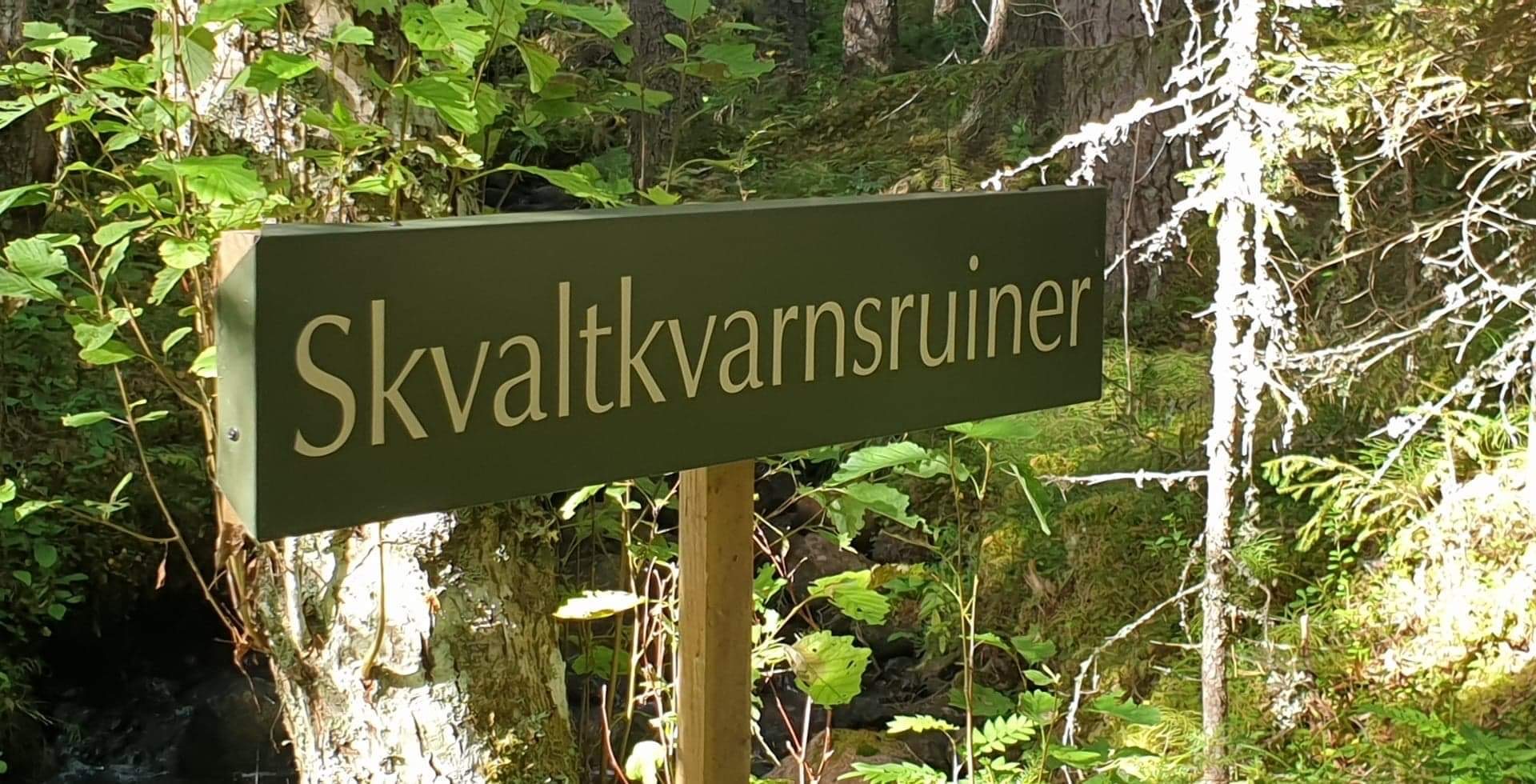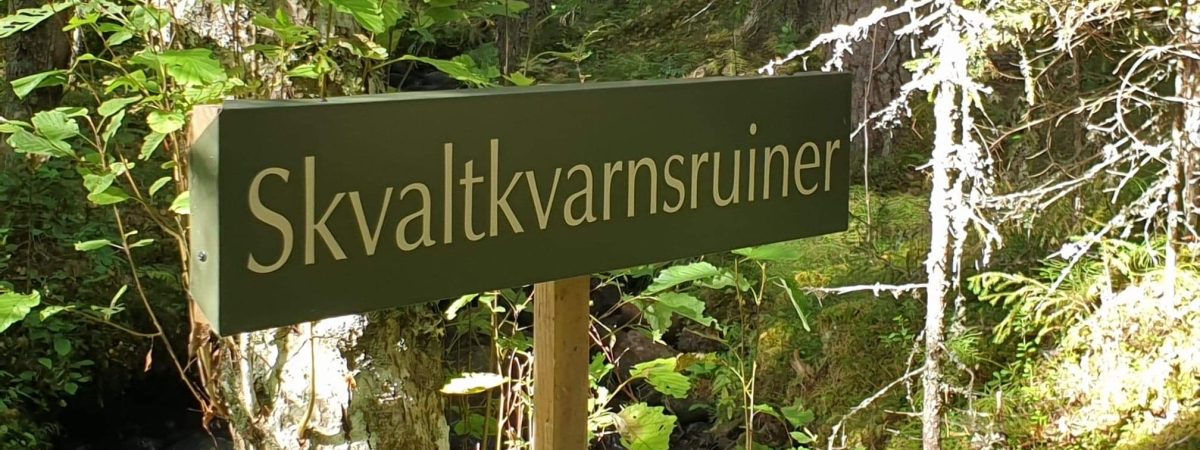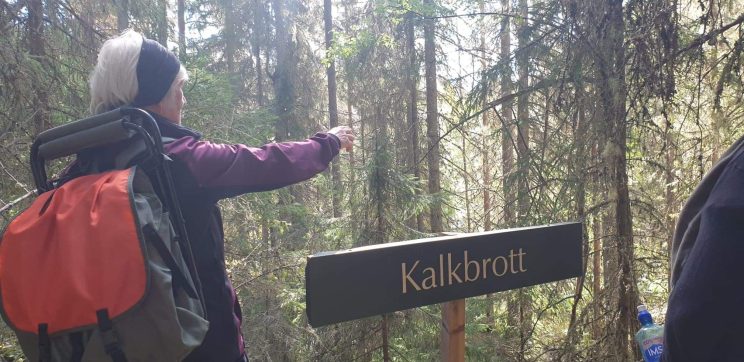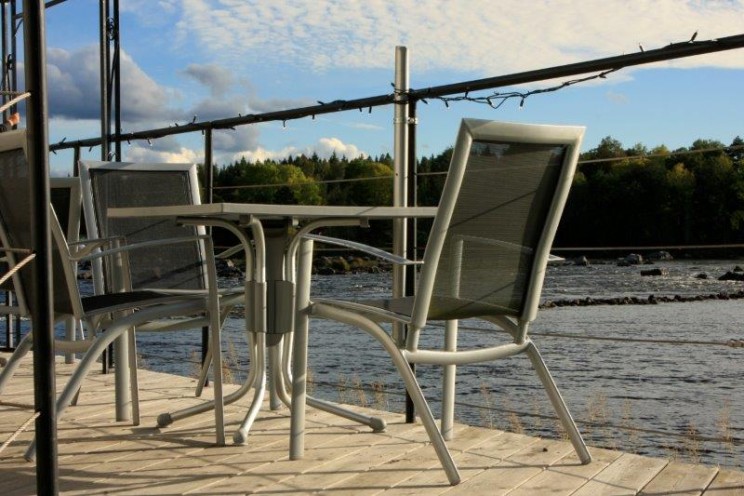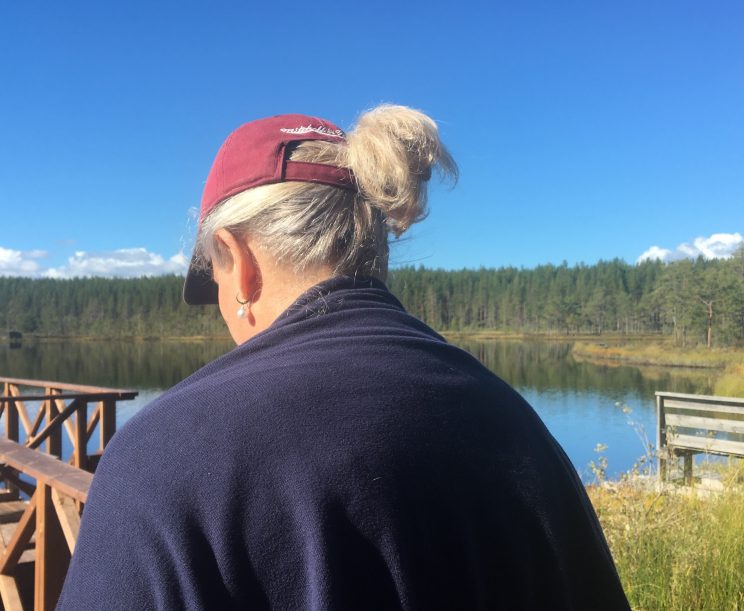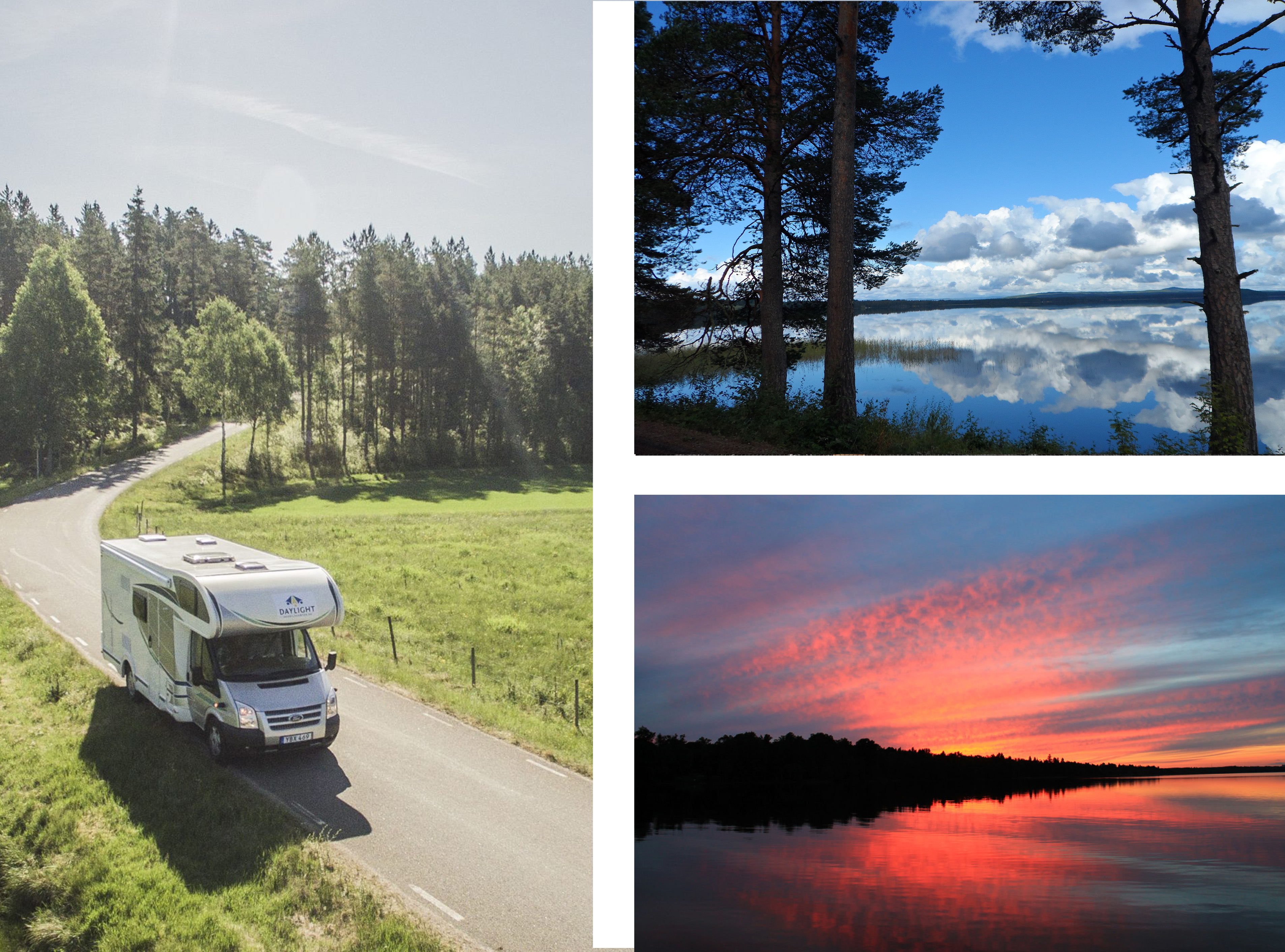In this article, I will be talking about Sweden’s forestry industry and its history. Sweden is known for its natural beauty and plentiful forests. Many come here to hike or go cycling in nature. But, how much do you know about the background and story behind Sweden’s woodlands?
On your visit to Sweden, you would see many nature sites. These protected areas has a history of environmental conservation, as well as the connection locals have with the forests and nature. Of course, the story begins with the complicated relationship between Swedish forestry, development, and local lifestyle.
Green infrastructure: Importance and challenges
Nature, such as forests, waters and rivers, are valuable nature resources. It is clear that along with rich resources in an area, come human activities. Almost two thirds of Sweden is covered by forests, and forestry and wood products constitute a high value to the Swedish economy.
The River Dalälven
River Dalälven is a perfect example when talking about green infrastructure. The landscapes along the river Dalälven runs from the Norwegian border to the Baltic Sea coast. Using river as a compass, the areas and trails nearby are great for hiking.
There are several nature attractions to visit if you migrate in the direction of the river, but expect some detours to go places with unique nature values. Sometimes the detours in these parts of Sweden implies 80 km or more to one direction of another.
There seems to be some debate about the exact source of the River Dalälven. It is somewhere close to the lake Stora-Våndsjön, a lake on the border of Sweden and Norway. What is for sure is that the areas surrounding the Dalälven River are characterized by dense forests. The combination of forest and water sounds like a hiker’s dream come true!
However, it is also one of the more important areas for Swedish forestry and water energy plants. People and fish alike have a hard time to migrate up the stream from source to river outlet.
On the river Dalälven, there is one of the major hydro power plants in the country. In order to produce electricity, the plant regulate the water with dams. In Dalarna County, there are approximately 15 large dams. Most are located on the Dalälven and its tributaries.
In addition, the water flow in the river often depends on the needs and regulations set by and for the water energy plants.
Human impact on the forest over time
The locals living in the River Dalälven area, and adjacent locations, have always had a close connection to the forests. This article will focus mainly on the regions called Dalarna, but also on Gävleborg.
People from Dalarna hunt, hike, and pick mushrooms. Today many still work in the forest or in an industry connected to forestry. Therefore, the forest is valuable to their direct livelihood. In addition, the local rural population depended on the forests for a range of essentials, such as timber for heating and construction, as well as berries, mushrooms, and game meat for food. This is important as many houses are still heated with pellets and the freezers are filled with elk meet, fish and berries.
I have close friends living in Dalarna, namely in the region of Ore in the municipality of Rättvik. On my visits there, I noticed that the woodland is connected to deep cultural roots and has inspired local culture, folklore, and mythology of the Dalarna, including the lake Siljan region. I know from my friend Gunilla that you can take “Dalkarl or Dalkulla” ( man or woman from Dalarna) out of the forest, but you cannot take the forest out of their identity. You are just born and brought up in and around the forest.
The history and culture of the people and the forest
The balance between conservation and being able to live off this natural resource has not always been easy to handle. As mentioned above, human activity has had an impact on the forest and the river landscape. If you are interested in the human settlers, some interesting historic and cultural features to look at:
- Visit the settlements of the “Skogs Finnar”. In the 16th century, Finns, who were specialized in slash-and-burn cultivation on forestland, were invited to colonize Swedish forests. There were settlements along River Dalälven, and they cleared land by the lakes.
- The seasonal nature of agricultural work (due to the climate) made rural inhabitants dependent on other work besides agriculture. Woodland farmers often produced and sold wooden products. In Dalarna you would typically find gifts and souvenirs made in wood.
- If you are curious to understand how people worked in the forest, you could visit Furudal in Dalarna and go into an old growth forest with a guided tour of human forest activities.
- Bog ore was gathered and worked by farmers as far back as prehistoric times. This had an impact on the forest at a local scale, as firewood was used for mining until later on when blast furnaces were introduced in the Nordic countries in the late 12th century. Iron manufacturing required charcoal. In the area around Dalälven you can find heritage iron works that will give you an understanding on how Sweden’s economic and warfare ambitions affected the forests and made small settlements in the midst of the great forests develop.
- Sawmill companies is a common features in the river valleys.
Sami people and their lifestyle
A Sami population has long existed in Central Sweden. The traditional lifestyle of the Sami people has historically revolved around fishing and hunting in combination with semi-nomadic reindeer husbandry.
Forests were used by the Sami for hunting and the collecting of berries and other wild foods, and as grazing grounds for the semi-domesticated reindeer. Trees were used for different reasons. For example, stumps were used as storage facilities, bark was used for wrappings, and the inner-bark was collected as a source of nutrients. Tree parts were also used for building the traditional Sami huts. In Dalarna, you can book at guided tour of an old Sami settlement close to Grövelsjön.
Finding Swedish heritage in the forest and culturally modified trees
Culturally modified trees is a type of cultural heritage in Scandinavia that most knew nothing about. It seems that the Sami people considered bark-peeled trees sacred. In addition, other settlers also modified trees for different purposes.
The modified trees in, for example Dalarna, are mainly pine and spruce. In addition, the ones you can find now are mainly from the 18th or 19th century. Trees were used to establish parish lines or show the boundaries of hunting grounds. For example, the young woman that spent the summers on “summer grazing farms”, used trees to transmit messages or set grazing lines, etc.
Modified trees are found mainly in the forests that have not been exposed to modern forestry. If you want to explore, look out for home forests that traditionally belonged to farms and villages, as well as on fäbodvallar (summer grazing farmsteads).
Before the entrance of big forestry companies, the land was mainly owned by villagers or perhaps a community of farmers. Many of the registered modified trees are not in the area of the River Dalälven, but in the municipality of Rättvik, mainly in Ore parish. Especially around the mountain Halgonberget (Haglingberget) there seem to be many of these modified trees.
Protected nature site of high value along the River Dalälven
- One of the popular nature reserve is Långfjälle and Grövelsjön mountain station. This is part of the southern trail of Kungsleden, and it is a well-visited mountain.
- Färnebofjärden National Park: This national park encompasses a variety of ecosystems, including old-growth forests and valuable wetlands. Some areas have developed naturally and provide habitats for diverse flora and fauna. You can find the national park along the most eastern part of the river Dalälven, about 140 km north of Stockholm.
- Östa nature reserve offers long sandy beaches with old pines. Walk along the kilometer-long sandy beaches along the Dalälven. The waters around Östa are rich in pike, zander and perch.
Ore Skogsrike (The forest kingdom of Ore)
The Ore Skogsrike forest is part of the Northern part of the municipality of Rättvik. Again, it is a bit off the course of the River Dalälven, but worth a visit as in this area you can find forest landscape with high conservation value forests, untouched by the forestry industry.
Local conservationist have protested and lobbied to make sure that Sveaskog, more about them later, recognizes the need to conserve and protect high values forest areas. According to a report, the Ore Skogsrike are consist of 21% old-growth forest and should be protected.
In the Ore area, you can also find the nature reserve Blåbergsåsflyten, and an important bog in size with high conservation values (the bog was never excavated). The forest is also of high values in terms of the old trees, the dead trees and the late-grown trees.
You will also find the nature reserve Gåsberget, a valued forest around the area of Lill-Trollmosseberget and Stortrollmosseberget (mountains). Some 125 years ago, a large forest fire left the area almost completely burned. Nevertheless, deciduous tress started to re-populate the forest and the area became an oasis for plants and animals.
Another important area is the Ekopark Ejheden. Local conservationists stated the need of protection for more large areas such as this one.
Important components of the green infrastructure
The green infrastructure include many forms and type of landscapes, such as forests, fields, parks, grasslands, wetlands, lakes, watercourses, coastal areas, and sea areas. The goal is to connect these and increase biodiversity, as well as create more effective habitats for flora and fauna for the benefit of nature and people.
The forest and forestry industry
Forest is one of the key resources of Sweden. It is clear that the forest plays an important role in climate change, and the forest’s ability to retain carbon makes it an important carbon sink. In addition, the climate change posses an increased risk for the forest with storms, droughts, fires, and increased insect infestations.
It is also obvious that forests with a higher level of biodiversity are less sensitive to climate-related changes. Therefore sustainable forestry requires all forest owners, and big forestry companies, such as Sveaskog (Sveaskog is Sweden’s largest forest owner) and smaller owners to develop resilient forests. Sveaskog have created in total 37 ecoparks (landscapes with high conservation value).
To create and maintain a green infrastructure, it is necessary to build the conditions for a coherent network of nature that contribute to functioning habitats for plants and animals, as well as to human well-being. Important aspects of eco forests are:
- How to manage and re-plant trees for the future.
- Managing the water courses and sources in the forest and,
- Ways to protect high conservation value forests.
In the Dalälven area, as well as in the adjacent areas, in regions such as Dalarna, you can find several high value and protected areas.
The river and watercourses
The river in it self is of course one main resources in a network of green infrastructure. However, the River Dalälven has an extensive hydroelectric power production, and there are a total of 42 power plants. The construction of hydropower plants often involves the alteration of river ecosystems.
- Dams and flow regulations disrupt the natural flow of rivers, affecting sediment transport, nutrient cycling, and the habitats of aquatic organisms.
- Dams can impede the migration of fish, particularly those that migrate for spawning purposes. Fish often can’t enter the river in and around the plants. In addition, for effective transportation on the river, they needed to make the watercourses more straight, as well as clear of stones and blocks. This resulted in a deterioration of the habitats for fish. Later, in order to transport timber on forest roads, they built culverts over the watercourses. This made it more difficult for fish to migrate along the watercourses.
- Changes in water flow and temperature caused by hydropower plants can influence water quality. However. the water quality in Dalälven is better as the chemical outflow from forestry industry decreased.
- The regulation of water flow may also affect the distribution of nutrients and sediment, impacting downstream ecosystems.
One of the protected areas along the river is the Biosphere reserve Nedre Dalälven.
The wetlands and Ramsar
Ramsar is the convention of wetlands from 1975. For example, in Sweden there are 68 Ramsar wetland sites that covers a total of 665,474 ha. The aim is to protect valuable wetlands in order to preserve the special biological values in shallow vegetation-rich areas. This is why, the convention states the sustainable use and conservation of wetlands, lakes, watercourses and shallow ocean areas.
Apart from the Ramsar wetland sites in Central Sweden, you will come across many bogs and marshlands as you walk in the nature reserves, national parks, and biosphere regions. You will come across wetlands and mashes of different sizes. Actually, mainly the bogs are one of the most common ecosystems in both Dalarna and Gävleborg counties.
One popular Ramsar site is in the Färnebofjärden National Park. In Dalarna, in the municipality of Rättvik, you can also visit the nature reserve Blåbergsåsflyten and experience a large bog with high values.
If you go to the most eastern part of the River Dalälven, you might end up in the county of Jämtland. It is a region that attracts outdoor and nature-lovers alike. Here you will find Ånnsjön, a lake that you can reach by road, approximately 154 kilometers northwest of Östersund. The lake and the wetlands are rich in fish, water birds etc. Another site is in the Henvålen Nature Reserve, also in Jämtland County.
How to visit Swedish countryside and forests in a respectful manner
Depending on how you would like to travel there are different options.
- If you are planning to explore Sweden by bike and cycle around, you need to find a trail with a lot of stops on a relatively short distance. Perhaps you want to combine it with public transport. Keep in mind that the public transport often is run by different operators with different rules. Read the information on train operators allowing bikes. Otherwise, you could always rent a motorhome instead with your bike.
- Perhaps you want to explore Sweden by local transport. This can also be a challenge as the main public transport routes are between bigger urban centers. Look out for transport hubs and then try to take local buses.
- A great way to travel in Sweden is with a campervan or a motorhome. Thanks to the freedom of roaming act, you have public access to places to stay. Please read about “conscientious traveling” and plan ahead. There is also more and more overnight parking for campervans and motorhomes in towns. You just have to google the municipality you are traveling to. Marinas, golf courses, farmsteads, and countryside resorts often have a few pitches if you want to stay overnight. For more information on places where you can park your motorhome overnight in and around the ring of the Lake Siljan.
Villages to visit in Oreskogsrike
A small village with a long history of forestry is Furudal in the municipality of Rättvik. This used to be a vibrant community with a railway station and a high street with banks and shops. Today, the high street remains, but with mostly seasonal pop-up shops and a bakery.
There is a local saw mill and a company producing ready made wooden houses. The community also has an ice-hockey club and a small, but vibrant tourist sector. If you love hiking and outdoor sports, there are many stunning trails and nature sites. You can also hike and ski in the winter.
If you into a true learning holiday for your family and friends, you can book a local guide. If you are a true adventurer, you can marry your partner or baptize a child in the midst of the forest.
More on protected nature sites in Sweden
For more on National Parks in Sweden, visit Sverige National Parker and also check out Nature 2000 nature sites and other protected areas.
